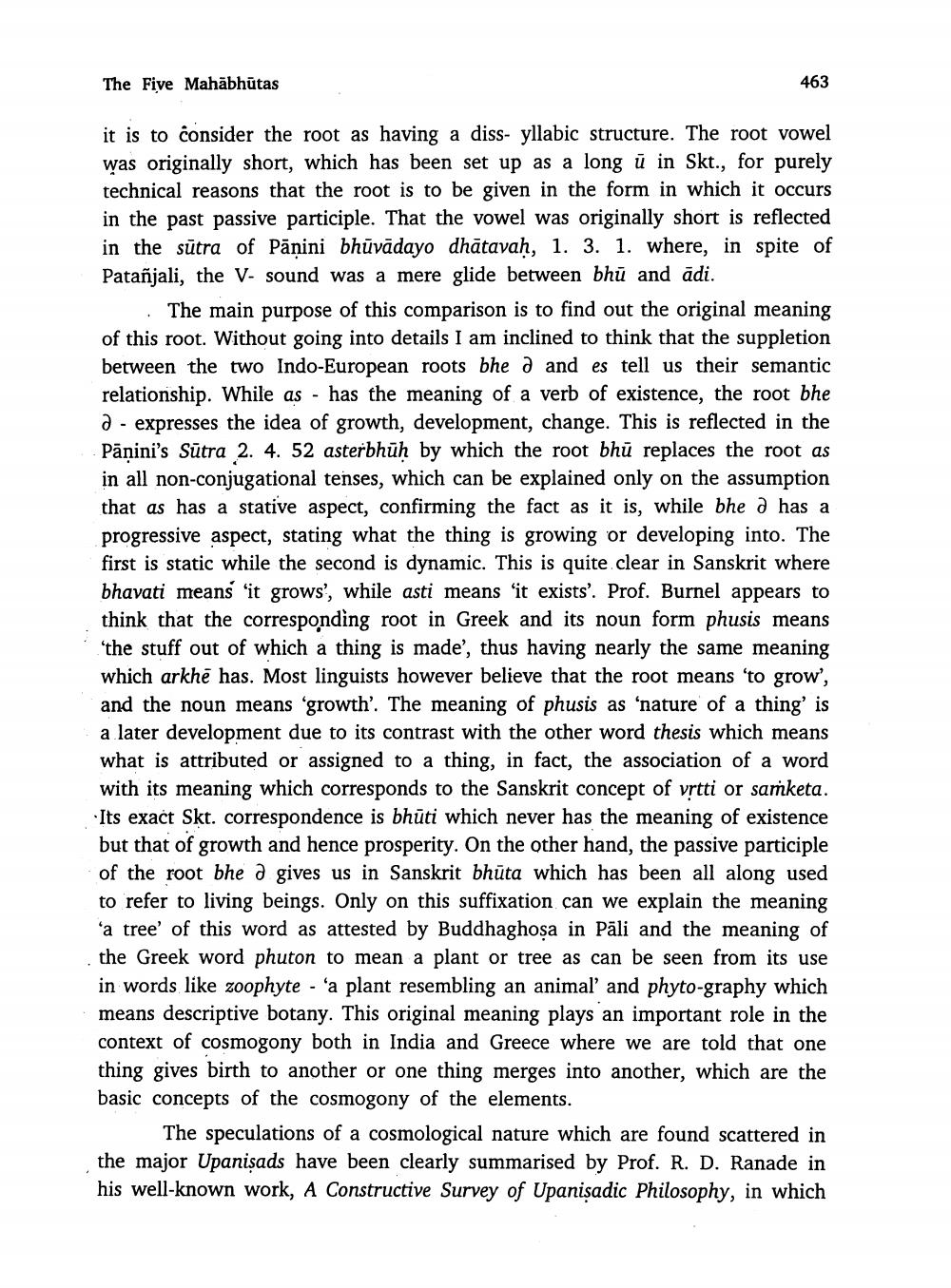________________
The Five Mahābhūtas
463
it is to consider the root as having a diss- yllabic structure. The root vowel was originally short, which has been set up as a long ū in Skt., for purely technical reasons that the root is to be given in the form in which it occurs in the past passive participle. That the vowel was originally short is reflected in the sūtra of Pānini bhūvādayo dhātavaḥ, 1. 3. 1. where, in spite of Patañjali, the V- sound was a mere glide between bhū and ādi.
The main purpose of this comparison is to find out the original meaning of this root. Without going into details I am inclined to think that the suppletion between the two Indo-European roots bhe a and es tell us their semantic relationship. While as - has the meaning of a verb of existence, the root bhe a - expresses the idea of growth, development, change. This is reflected in the Pānini's Sūtra 2. 4. 52 asterbhūh by which the root bhū replaces the root as in all non-conjugational tenses, which can be explained only on the assumption that as has a stative aspect, confirming the fact as it is, while bhe a has a progressive aspect, stating what the thing is growing or developing into. The first is static while the second is dynamic. This is quite clear in Sanskrit where bhavati means 'it grows', while asti means 'it exists'. Prof. Burnel appears to think that the corresponding root in Greek and its noun form phusis means 'the stuff out of which a thing is made', thus having nearly the same meaning which arkhe has. Most linguists however believe that the root means 'to grow', and the noun means 'growth'. The meaning of phusis as 'nature of a thing is a later development due to its contrast with the other word thesis which means what is attributed or assigned to a thing, in fact, the association of a word with its meaning which corresponds to the Sanskrit concept of vrtti or saṁketa. Its exact Skt. correspondence is bhūti which never has the meaning of existence but that of growth and hence prosperity. On the other hand, the passive participle of the root bhe a gives us in Sanskrit bhūta which has been all along used to refer to living beings. Only on this suffixation can we explain the meaning 'a tree of this word as attested by Buddhaghosa in Pāli and the meaning of the Greek word phuton to mean a plant or tree as can be seen from its use in words like zoophyte - 'a plant resembling an animal and phyto-graphy which means descriptive botany. This original meaning plays an important role in the context of cosmogony both in India and Greece where we are told that one thing gives birth to another or one thing merges into another, which are the basic concepts of the cosmogony of the elements.
The speculations of a cosmological nature which are found scattered in the major Upanisads have been clearly summarised by Prof. R. D. Rana his well-known work, A Constructive Survey of Upanisadic Philosophy, in which




